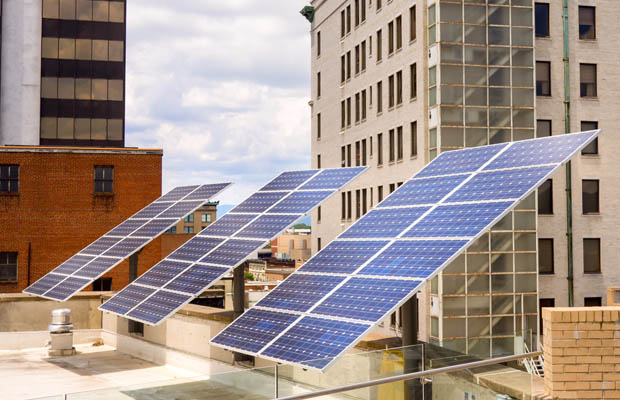

4 Tips on Increasing Solar Panel Efficiency
By Grainger Editorial Staff 1/1/17


Solar panels do not work equally under all conditions, but you can take proactive steps to improve the efficiency and output of your solar system layout or array. A few simple steps can ensure you are getting the best return from your solar investment. From positioning solar panels for optimal power generation to applying for utility rebates and green energy grants, these four tips can maximize your solar panels’ output and increase your energy savings.
1. Eliminate Shade: Solar panels are designed to work best in direct sunlight. If the sun is blocked out by a tree or another building, your array’s output could be dramatically reduced. According to Energy Sage, shade is most detrimental for solar panels using a “string” type of inverter, which limits the array’s output to the intensity of the weakest panel. Even if only a small piece of your array is shaded, the entire installation’s output may be throttled back.
Trim or remove trees around your array. If the trees cannot be removed, or shade is being cast by a part of the building, Energy Sage recommends using a microinverter or power optimizer inverter, which will maximize output from the unshaded portions of the array.
2. Face the Sun: Solar panels produce their highest output when they’re directly facing the sun. According to Solar Reviews, panels facing due south will receive the most direct sunlight throughout the day and potential output is highest. A more westerly orientation produces more power in the afternoon and early evening.
The best orientation for your solar panels depends on how and when you use electricity, and how your power is priced.
South-facing panels may be best when a utility has 1:1 net metering, which is the practice of the utility offering full-price billing credits for excess power generated by a customer's solar grid. Generating the most power possible, no matter the time of day, is the goal.
However, if the utility has time of use billing – charging higher prices when the most power is used – you'll need to give more consideration to exactly when the most power is used in your facility or residence. A south or southwest orientation might be optimal in this case.
3. Keep it Clean: Dust can gradually accumulate on your solar panels, diminishing their output. According to the National Renewable Energy Laboratory, dust buildup can gradually reduce your array’s output by as much as 7%.
The magazine Green Choices reports that cleaning your panels can be as easy as rinsing them off with a garden hose, although removing built up grime could require scrubbing with a soft brush. When choosing an installation location, consider accessibility for periodic cleaning.
4. Leverage Rebates: Since solar power is good for the environment, the government offers tax rebates and credits for solar power at the state, local, and federal level. Your local utility may also provide incentives for new installations. Federal tax credits offered through the Department of Energy can offset 26% of commercial solar installation costs for projects that begin before the end of 2022, and the credit scales down beginning in 2023. Local and state rebates can further reduce your upfront costs.
Get more tips and insight on energy-saving practices for your business.
The information contained in this article is intended for general information purposes only and is based on information available as of the initial date of publication. No representation is made that the information or references are complete or remain current. This article is not a substitute for review of current applicable government regulations, industry standards, or other standards specific to your business and/or activities and should not be construed as legal advice or opinion. Readers with specific questions should refer to the applicable standards or consult with an attorney.






